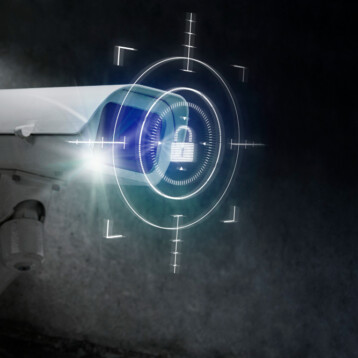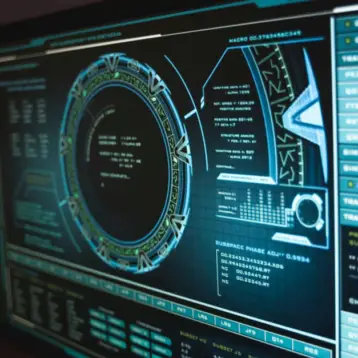|
The BioPen has been designed to help soldiers on the battlefield determine whether they have been exposed to dangerous biological agents in under 20 minutes. The novel diagnostic device – equipped with a small LCD screen – is user-friendly, does not require the user to have any preliminary training, and is self-sufficient. In addition, it can be used to check whether water is drinkable, to detect environmental toxins, and to diagnose various common infections such as Hepatitis B and C, and even several types of cancer, more accurately and efficiently than tests currently in use. This amazing feat is achieved by a special method devised by the Ben Gurion University team for antigen detection, which is an adaptation of the widely employed Enzyme-Linked Immunosorbent Assay (ELISA).
The ELISA at Work
When the body’s immune system encounters a particular antigen (for example, a characteristic protein on the surface of a virus or bacterium), antibodies that are specific for that antigen intercept it, physically binding to it in a “lock and key”-like fashion, thereby neutralizing the organism. The ELISA is a fundamental immunological and biochemical technique, utilized to detect a putative antigen or antibody in a sample, based on antigen-antibody interactions. If a putative antigen (or likewise, an antibody) is detected, a signal is produced in the form of a measurable change.
|
To assess the presence of a particular antigen in a sample, a “Sandwich ELISA” may be performed essentially as follows. A solution of antibody, which is specific for (i.e., uniquely recognizes) the putative antigen, is immobilized on a solid surface in a well of a microtiter dish. The sample being assayed is then applied under conditions that would allow the antigen (for which the antibodies are specific) to bind to the immobilized specific antibodies. Unbound material is washed away with buffer rinses, and the bound antigen is recognized once again under binding conditions by addition of a solution of a second antibody specific for the same antigen, which this time is coupled or linked to an enzyme that catalyzes the conversion of its substrate to a detectable and possibly quantifiable form.
|
Those enzyme-linked antibodies that are bound to the immobilized antigen-antibody complex are resistant to rounds of washing, and finally the enzyme substrate is added and incubated so that the enzyme can catalyze the conversion of the substrate to signal the detection of the specific antigen. ELISAs typically employ either a chromogenic or a fluorogenic substrate, which produces a color or fluorescence change, respectively, upon conversion by the enzyme linked to the second antibody. Conversion of the enzyme substrate is conveniently observed or quantitated on a plate reader that measures optical density or fluorescence intensity. In summary, a color or fluorescence change signals the enzyme activity, which signals the presence of the second antibody, which signals the presence of the antigen sought.
|
The BioPen
Modifications to the basic ELISA incorporated in the BioPen have been achieved by applying a higher degree of automation, and also by employing light radiation by means of a fiber optic probe (a thin, transparent fiber that transmits light) and a computer sensor for the built-in, highly sensitive detection of antigen-antibody complexes. The Ben Gurion team has also succeeded in miniaturizing this improved detection technique by containing it in the small BioPen, which can be hooked to a PC for storage and further manipulation of the data.
Interview with Dr. Robert Marks
To learn more about the BioPen and its potential, TFOT interviewed Dr. Robert Marks, the inventor of the BioPen.
Q: Would you briefly explain what the BioPen is and how it works?
A: The main objective of our project is to create a BioPen – a fully portable, self-contained, real-time, one-time use (disposable), and sensitive pen-like device, that allows the detection of putative warfare agents at the site of action. This device will also be able to detect toxicants in the field, or even human physiological fluids for evidence of exposure to disease.
|
The idea is that the end-user will either prick a drop of blood from a sick patient or exposed individual, or collect a drop of contaminated water through a retractable needle that will bring to the BioPen’s interior the collected sample. From this time on, all the required and subsequent operations, normally run by qualified personnel in a laboratory, are performed within the closed pen-like device, protecting fully any user from the putatively contaminated sample. This feature is not found today in any commercial kit. From the moment the sample enters the BioPen, the fiber-optic probe tip, contained within, will be exposed to the sample. Thereafter, an automatic series of steps will process the fiber tip until the last operation, which will be the generation of light in the presence of a positive toxicant (be it a virus, a bacterium, a bio-toxin, or antibodies thereto). The light is collected by the fiber optic, transferred to the BioPen cap (containing a non-disposable photo-detector where the radiation glow will be read), which provides the quantitative and qualitative data for identifying the presence of the putative bio-agent.
Q: How does the BioPen compare to other similar products on the market?
A: It is self-contained (similar to the pregnancy test), it is very sensitive (unlike most other tests, which are not), it is automated (unlike most tests that need personnel to run them), it is field-operable (unlike most tests), and does not need complicated lab equipment to run.
Q: Apart from the military applications you mentioned, do you also foresee civilian applications for the BioPen?
A: Yes. For example, it can have veterinary applications, being able to quickly identify bird flu and Brucellosis. It also has some clinical uses primarily as a point-of- care (POC) test tool for examining patients directly at the bedside.
Q: What sort of tests does the pen perform? What sort of agents does it look for? And what sorts of substances will it be unable to detect?
A: The BioPen can currently detect a variety of viruses ranging from Ebola, Hepatitis B and C, Dengue, West Nile virus, to Rift Valley fever. The BioPen can also detect bacteria such as Brucella and different sorts of biotoxins. Another group of tests the BioPen is capable of doing is cancer tests for both ovarian and breast cancers. Currently the BioPen is unable to perform tests in order to discover exposure to chemical warfare agents such as nerve gas.
Q: Is the technology patented? Did you approach DARPA (The Defense Advanced Research Projects Agency) or other relevant parties to assist in financing the continued development of the Bio-Pen?
A: The BioPen is a patented technology. DARPA has not responded to-date.
Q: What stage of research have you reached?
A: The assays work but the actual making it into a pen has not been done yet, and will not be unless we get 1-2 million dollars of funding, which we are currently looking hard for.
|
Q: When do you predict we will see a commercial product and what do you predict the price range of a commercial product to be?
















